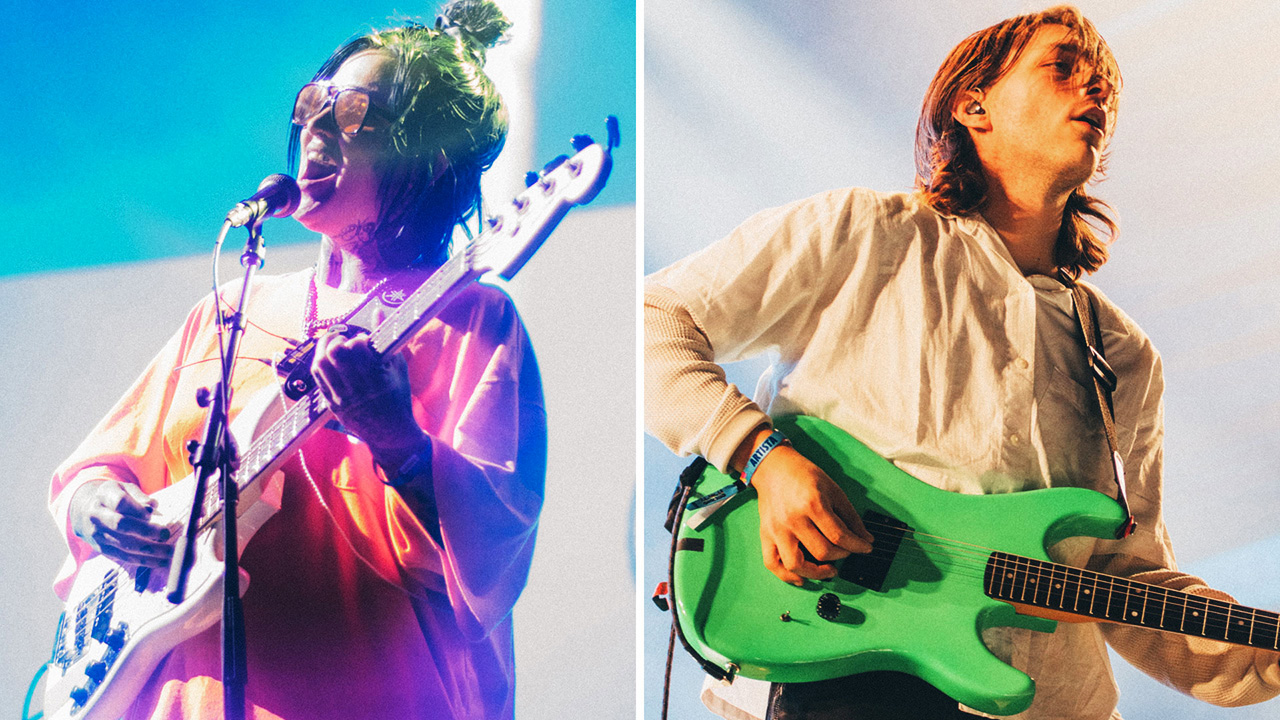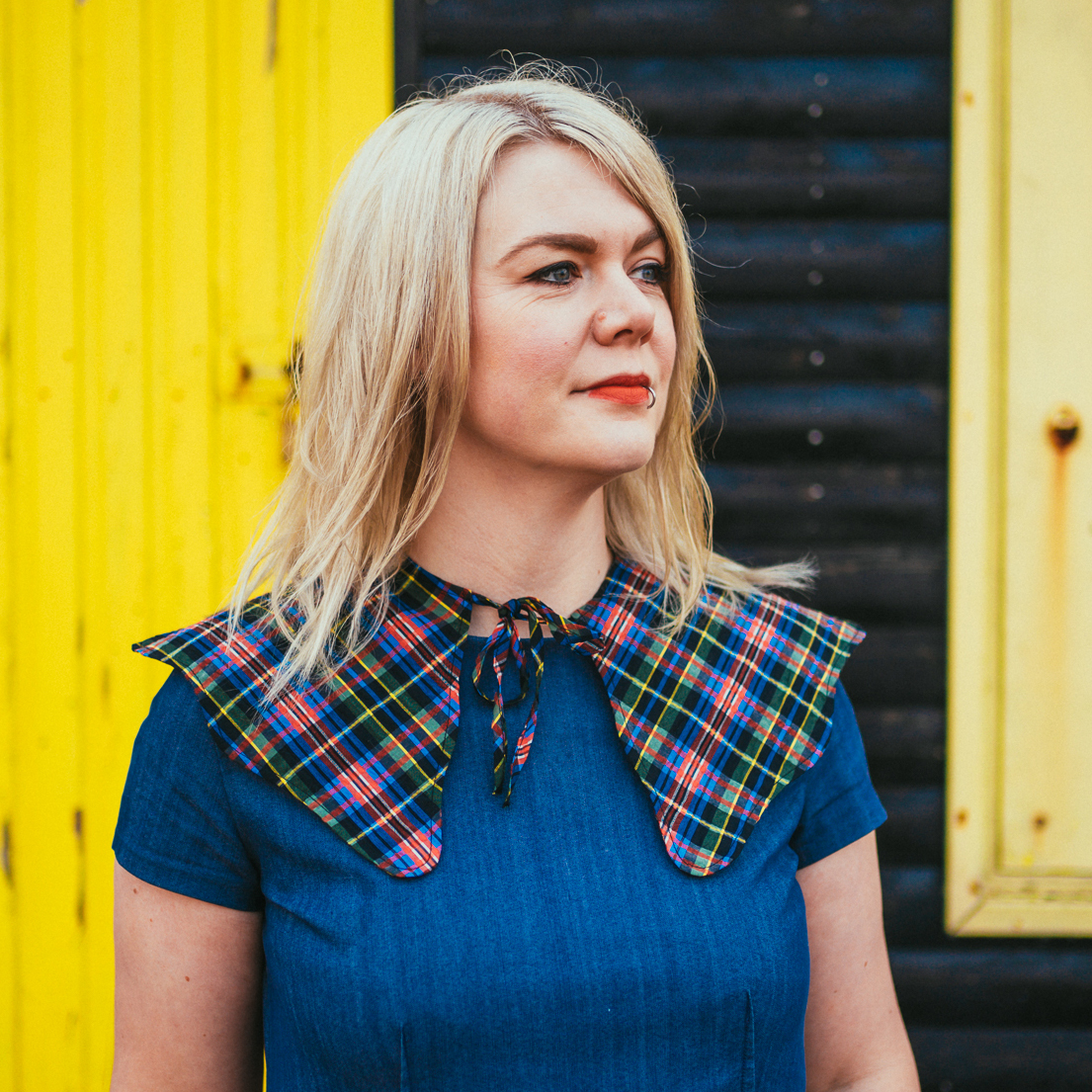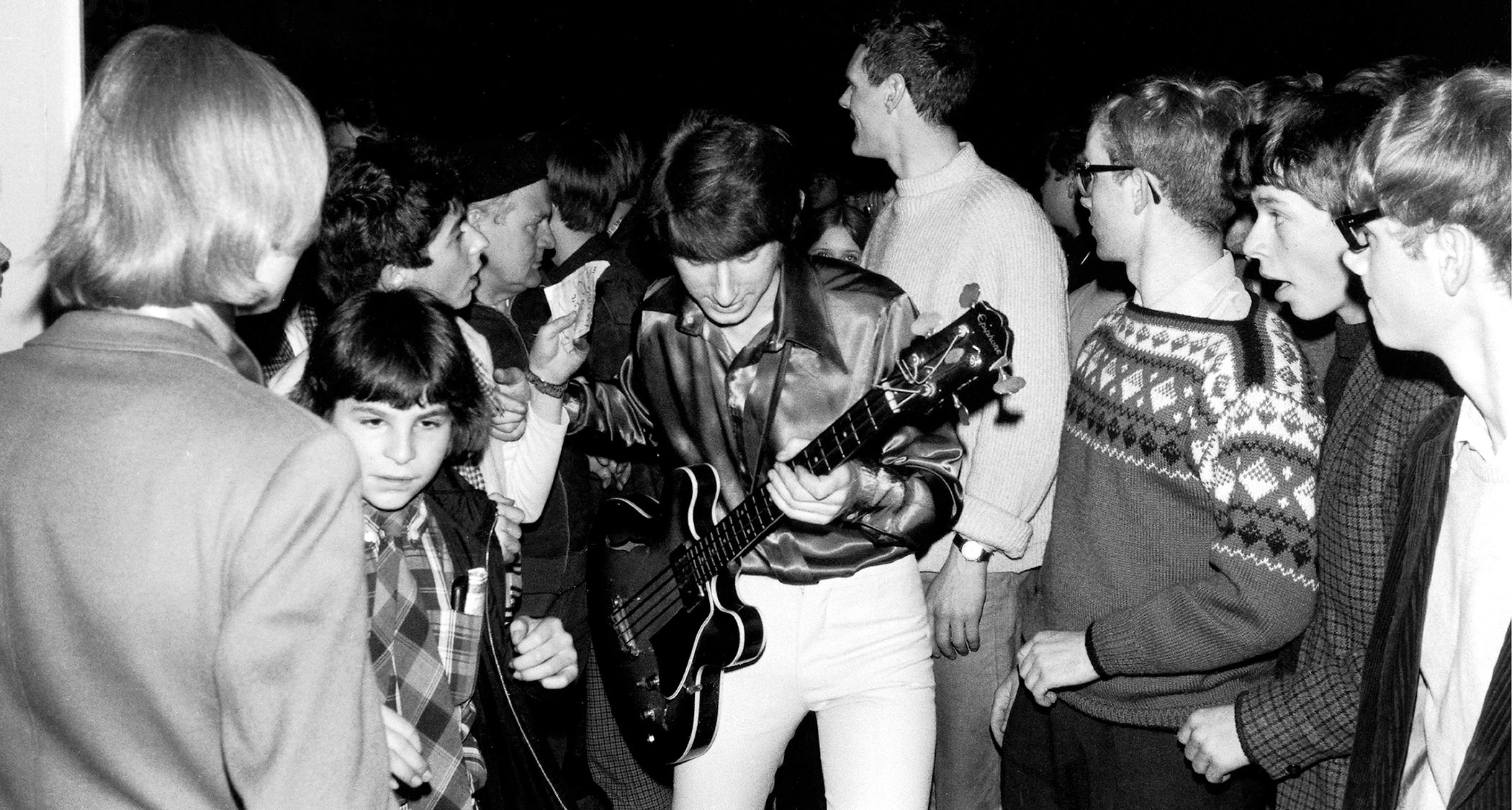“My green Kramer is the first electric I had. I didn’t know what locking tuning was, so I was like, ‘Oh, it’s broken – you can’t tune it!’” Meet Dehd, the indie-rockers building a wall of sound from ’80s shred machines and out-of-tune basses
Jason Balla and Emily Kempf worship Big Muffs, reverbs and Roland amps – and are making the kind of shoegaze-informed alt-rock dreams are made of

Jason Balla – guitarist, co-vocalist and longstanding producer of Chicago slackers Dehd – has been known to work so late in the studio that he’ll sleep under the sound desk. His dedication has helped deliver four albums of sunny road-trip anthems with smatterings of surf breaks and rollicking rhythms.
But for album number five, the songwriter has loosened his grip on the reins, welcoming Whitney’s Ziyad Asrar aboard for co-production duties, and so creating a novel new dynamic in the studio.
It’s not the only way the trio – completed by bassist Emily Kempf and drummer Eric Grady – have shifted into fresh terrain.
To write the material that forms Poetry, the trio explored a series of locations including their beloved Windy City, a loft in Seattle overlooking the Puget sound, and the sustainable Earthships of New Mexico (where Kempf now lives).
Emily, you never planned to form a band – but inspired by some like-minded pals on the art circuit, you booked a venue and formed the Back Pockets. What did you play before shifting to the bass guitar?
Kempf: “I picked banjo because I could hit anything and it sounded like I knew what I was playing, because it’s open G. After Back Pockets ended, I started playing the keyboard; then I picked up bass playing in Dehd. I also played bass in Lala Lala. Those two bands led to me playing bass in the way that I do.”
What was your introduction to guitar, Jason?
All the latest guitar news, interviews, lessons, reviews, deals and more, direct to your inbox!
Balla: “I played bass in emo bands in high school. I bought a bass and it came with an acoustic guitar. I’m still playing it! It’s the shittiest guitar of all time – I figured out how to make it sound good on recordings two weeks ago.
“But my green Kramer guitar is the first electric I had. It has locking tuning for the Floyd Rose bridge; I didn’t know what that was at the time so I was like, ‘Oh, it’s broken – you can’t tune it!’
“I left it to sit in my closet probably for six years; then I came home once after moving away, and I was like, ‘Oh my God, I’m such an idiot. It’s just an Allen key.’ That's when I started playing it for Dehd.
“When I break a string, it’s hard to change them fast, so it fucks up our live show. I’ve had backup guitars that never worked; I could never find one like the green one, so I bought an '80s one, then researched mine and modded it to be the same.
Whatever you hand me, I’m gonna figure out a way to make noise out of it, and I only do it because I need it for my voice
Emily Kempf
“The other nice thing is the way the floating bridge sticks out. There’s just enough room that I can get my hand under it and do all the whammy bar stuff, just with my palm. The whammy bar seems so awkward; doing it with my palm makes me feel like one with the instrument.”
Emily, I spotted a lot of photos with your Eastwood Warren Ellis guitar in cream, based on the Nick Cave collaborator’s tenor guitar. What made you opt for that?
Kempf: “That was one of my guitars – I’m now on a white Fender. I think it was a Warren Ellis knockoff. We went to a used gear place in California [Fat Dog's Subway Guitars]. On the outside of the case, it said ‘Dragon’ in red spray paint. I played that for a while.
“Before that, I played a Jaguar short-scale, which I covered in paint. That bass was crappy. But I’m known to play really shitty instruments with really loose strings. I’m always out of tune apparently, because I hit the strings so differently all the time and I put pressure on them differently.
“I’m not a gear person; I’m very intuitive. Whatever you hand me, I’m gonna figure out a way to make noise out of it, and I only do it because I need it for my voice. My voice is the instrument that I am attached to.”
A few Reddit fans have pieced together the guitar rig from past Dehd performances. They came up with two delays – the Chase Bliss Audio Tonal Recall and MXR M169 Carbon Copy – a Death By Audio Echo Dream 2, and a Red Panda Context reverb. How accurate is that?
Balla: “That’s pretty much it, but I don’t use everything for what they’re probably thinking. I use the Echo Dream as a saturator. The MXR I use for space and the Context is the big reverb one. I think it’s ripping off those AMS reverbs.
“I also use a Boss BD-2 Blues Driver. I’ve tried to get other pedals; the older, simpler ones are all you need. I’ve also been using a DigiTech Hot Rod in the studio – it’s fucking sick.”
Kempf: “I only have one pedal. It’s a distortion, like a Big Muff vibe, and Jason made it. So when people are like, ‘What’s that?’ I feel so cool – because they'll never get one!”
My amp fell out of the trailer and was stolen. I was able to find the another one the next day on Craigslist!
Jason Balla
Balla: “It’s called the Blue Fuzz because there are two fuzz circuits in it and you can blend between the two. One of them is an LED-diode clipping circuit with a blue light so you can see the distortion in the sound coming through.”
What about your amp setups? How do they differ between rehearsal, the studio and then on stage?
Balla: “It’s all the same amp. I use this old Roland JC-77 which is another old one. The night I broke my guitar, when the headstock exploded, my amp fell out of the trailer and was stolen. I was able to find the another one the next day on Craigslist!
“In the studio we did Emily’s bass through our touring rig, then through a vintage Fender Bassman – which is what I used to use.”
Kempf: “I was on a Fender Rumble for a long time because it was lightweight; then I moved on to a Bergantino little box. I’m always trying to get little and lightweight but loud.”
How is the set gearing up for your live dates?
Balla: “It’s honestly going good. This is the first record where we’ve never played some of the songs fully, because we wrote them in pieces. So there’s been a lot of imagining how to do it.
“We’ve been making a lot of use of the Roland SPD SX for sampling – little tricks that me and Ziad had cooked up. So Eric is doing a fuck-ton of work!”
Kempf: “Eric is doing a lot. He’s like our little secret tech wizard now!”
Cheri Amour is a writer, editor and broadcaster intent on amplifying the voices of women and non-binary artists in print, online and on air. During her twenties, she played lead guitar in a touring two-piece, sharing the stage with The Slits and John Peel-approved punks The Nightingales. Formerly Deputy Editor at TGA Magazine, Cheri headed up its Tech section pouring over pedals with everyone to indie icon Debbie Smith (Echobelly/Curve) to multi-instrumentalist Katie Harkin (Sleater Kinney/Waxahatchee/Wye Oak). She's currently working on an upcoming 33 1/3 book on the unassuming influence of South Bronx sister troupe ESG, out in Spring 2023.





